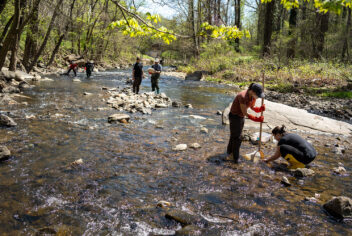Documentation is not only required by many state and federal laws, it is an important practice in risk management and a critical element in defending your nonprofit against a claim of some wrongdoing.
You may have heard, “If it isn’t documented, it didn’t happen.” And, as much as your nonprofit develops robust practices and procedures, they are of little use if there is nothing to document your compliance and adherence to them. In fact, lack of documentation around following your policies and procedures may actually harm your nonprofit.
If your nonprofit has been a party to a claim, you know all too well that gathering records is a key component to your defense. You may have a level of frustration when documents don’t show what you’re seeking to show — or that you can’t find them, or don’t have them.
Alternatively, you might be familiar with that sigh of relief knowing you can adequately and clearly show what you intend to prove.
Your success in mitigating legal issues may rest on clear, complete, and accurate documentation — and you also will be protecting your nonprofit, your programs, your clients, and your people.
Failure to consistently chart observational check-ins at a drug and alcohol rehabilitation center awards high six-figures against the nonprofit.
A client with a severe seizure disorder was admitted to a drug and alcohol rehabilitation center. While the client not only concealed her medical condition from her own doctors, she hid it from the center during suitability screening for the program.
Failing to comply with medications, the client could not control her seizures as they increased in severity and frequency. Within hours of admission into the center, the client died from what medically is explained as a sudden and fatal seizure. Survival was possible only with constant inpatient treatment and observation at a hospital.
The facility’s protocol was to perform observational check-ins every half-hour — unfortunately, the staff did not consistently chart these check-ins.
Although the jury found that the client was largely responsible for her own death, the facility’s lack of documentation resulted in a high six-figure award against the drug and alcohol rehabilitation center.
A school’s failure to document reports of abuse leads to settlement of the claim.
A school was sued for allowing peer-to-peer abuse. The school’s normal procedures included documenting and reviewing critical incidents. However, school staff made repeated decisions that recurring confrontations between the same students did not require documentation and review.
As plaintiff’s counsel placed together a timeline of events, it became clear that proper documentation would have prompted a review and appropriate action, likely resolving further incidents alleging abuse.
While there was no significant physical injury, the claim settled.
Other common examples of documentation:
- Observation checks in a residential treatment center
- Behavior documentation around a rescue animal
- Training of volunteers completed
- Communicating performance expectations to employees
- Tracking client care for proper billing practices
- Performing safety checks in transitional housing
- Tracking time worked, including meal/rest periods for wage and hour laws
- Documenting volunteer activities to verify procedures were followed
- Performing vulnerability assessments in homeless housing
- Recording volunteer time to seek additional funding
- Documenting housing status for targeted healthcare
- Documented services provided to support billing practices
- Recording site inspections to verify safety and no hazards
- Documenting investigation around complaints of abuse or harassment
Why is this important?
Keeping documentation offers your nonprofit credibility and lends well to process improvement, collaboration, and consistency in the services you offer.
You know that documenting situations takes time — but consider the amount of time you might expend when you can’t demonstrate that you followed protocols or that you did exactly what you said you did.
What you should do:
- Train all staff, particularly supervisors, on what should be documented and to instill an understanding of the importance documentation plays.
- Review documentation regularly to ensure it is consistent and up to date. There’s nothing worse than finding zero documentation and then trying to piece together a hazy memory. And, this may not help with credibility.
Tips for documentation:
There’s “good” documentation and “insufficient” documentation. As you engage your team to properly document events or protocols, consider the following tips for good documentation.
Documentation should be:
Accurate and Timely: Document at the time of the event and as policy/procedure/law may require.
Objective: Be clear with facts. Opinions may be appropriate in assessing a situation but should be based on underlying objective information to support conclusions.
Clear and Unambiguous: Use language and terms that can be understood by anyone who needs to access the information. In other words, your documentation should be understandable by any party referencing the information — this includes opposing counsel, a judge, or a jury.
Accessible to appropriate levels: Defining access levels to different information allows a “need to know” approach to limit sensitive information from getting into the wrong hands. Controlling access protects information and limits unauthorized disclosures and modifications to the record.
Consistent: Making documentation required and a regular practice lends well to credibility of the information that it is a true and accurate record of what was being documented.
Organized: Keeping an organized system will be helpful to any third party needing to review documentation and will save you time when you are asked to produce certain information.
Saved: Documentation is usually subject to some retention schedule. While some laws require retention for a specific period of time, your agency can decide to keep information longer for specific business purposes.
After all this, remember, documentation is creating evidence — evidence that your staff followed all required safety protocols, evidence that your nonprofit spent grant money as intended, evidence that you took appropriate steps for any complaints.
It is evidence that validates you did what you said you did. Establishing verification that documentation exists and is being drafted routinely is helpful.
If it’s not documented, it didn’t happen. Document — it’s how you recognize the good work you are doing in your community.





